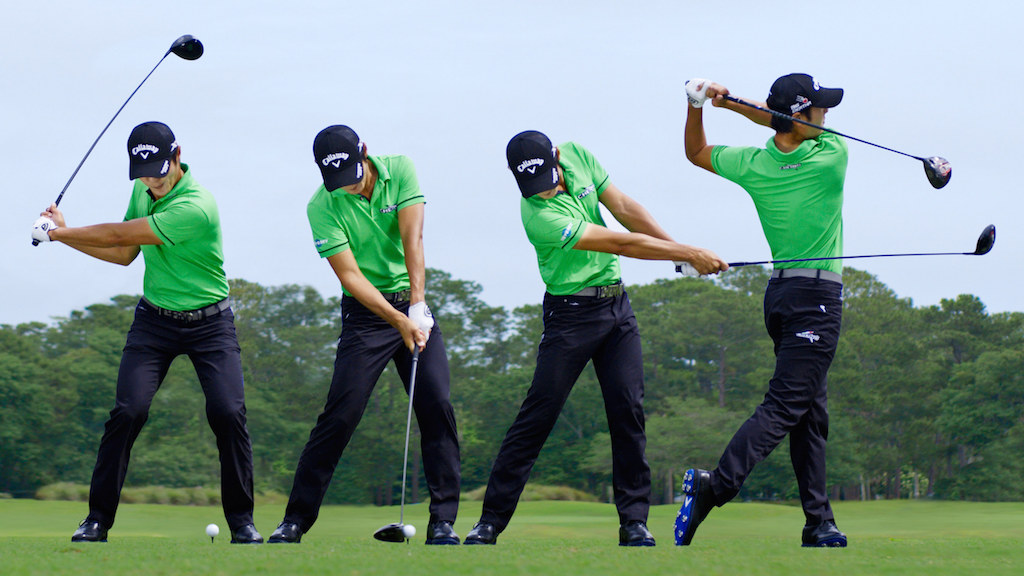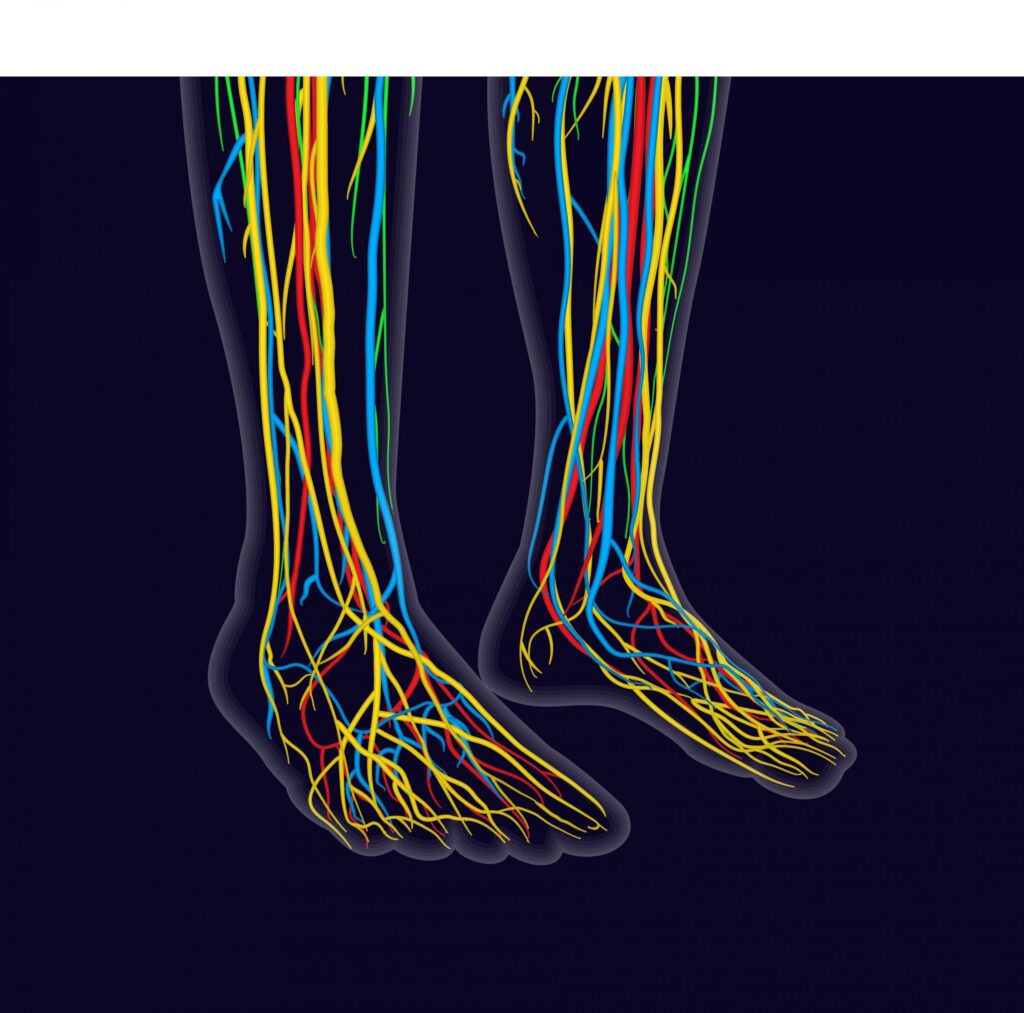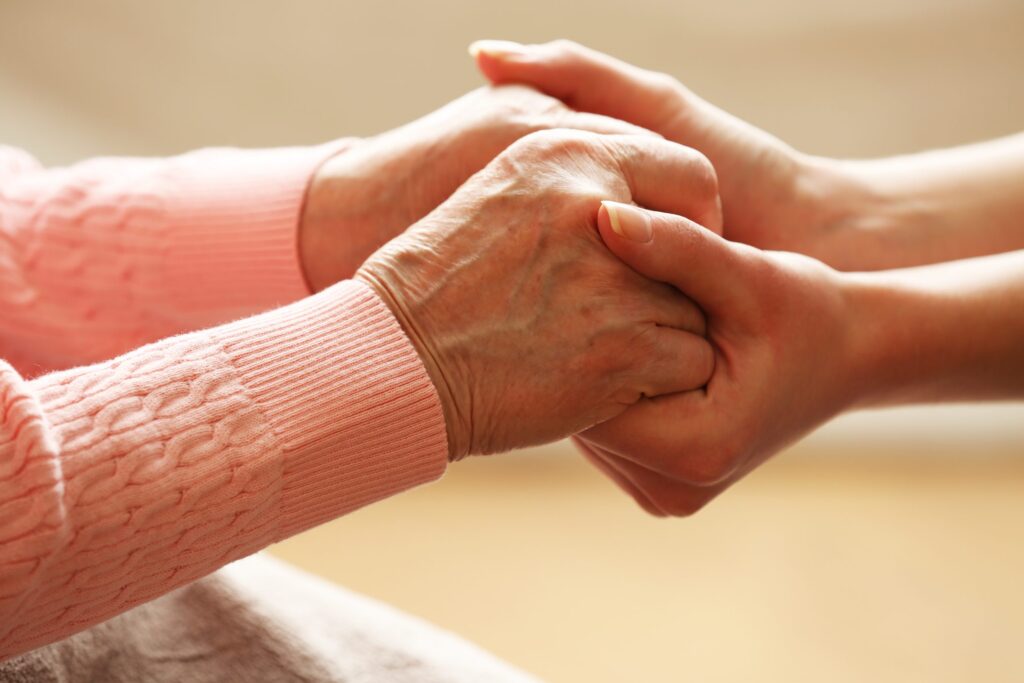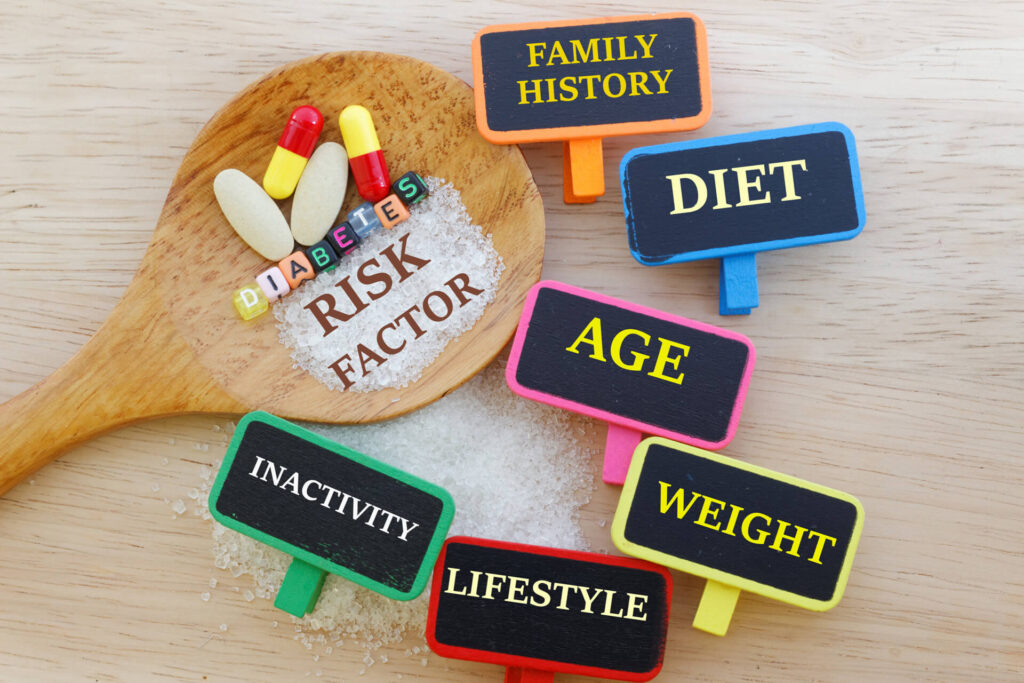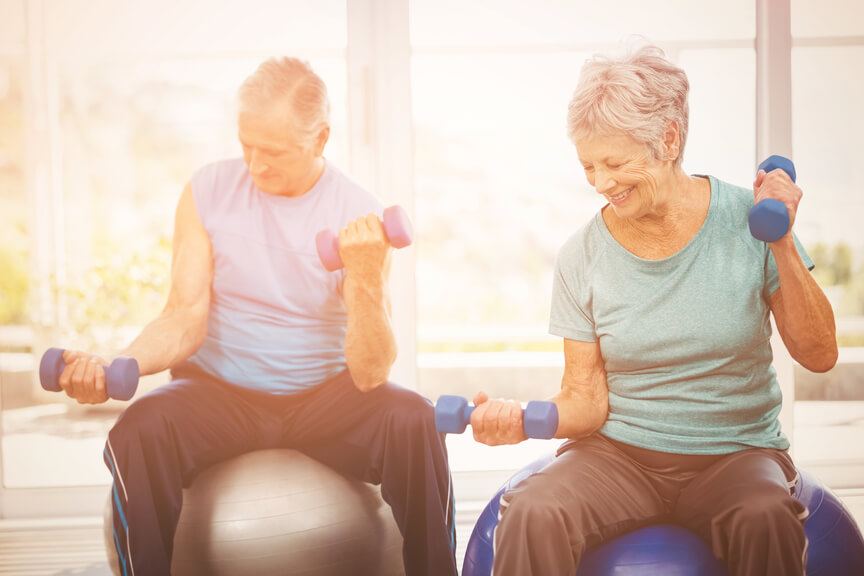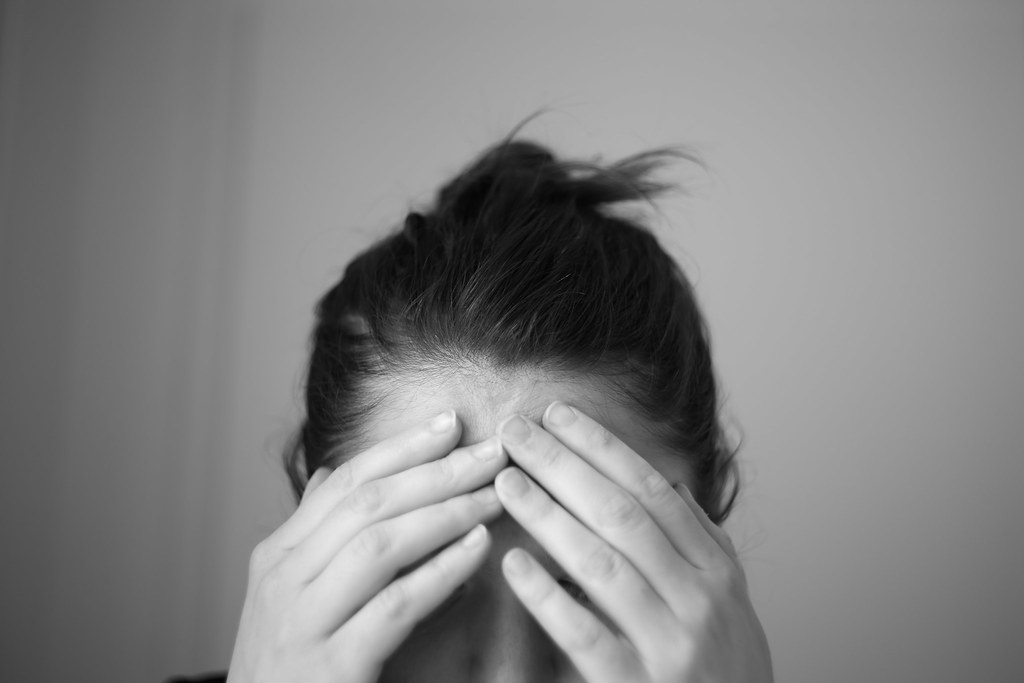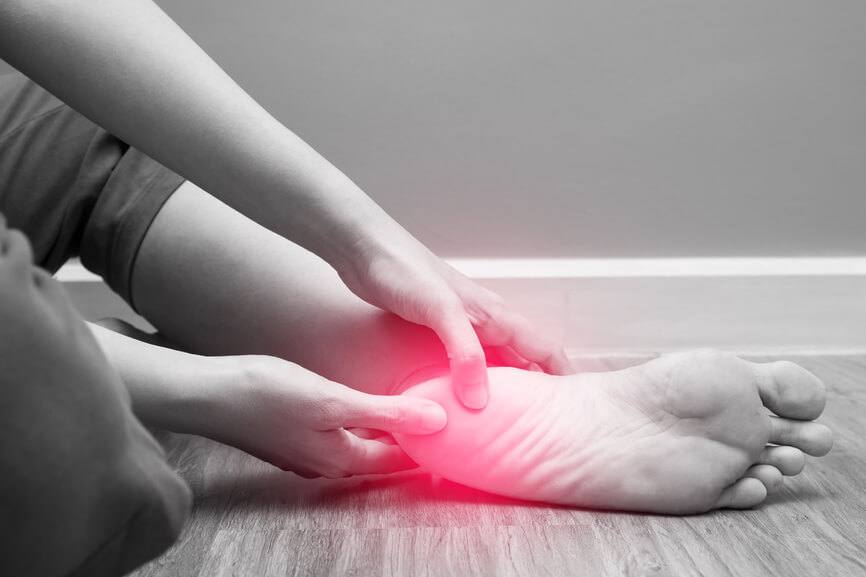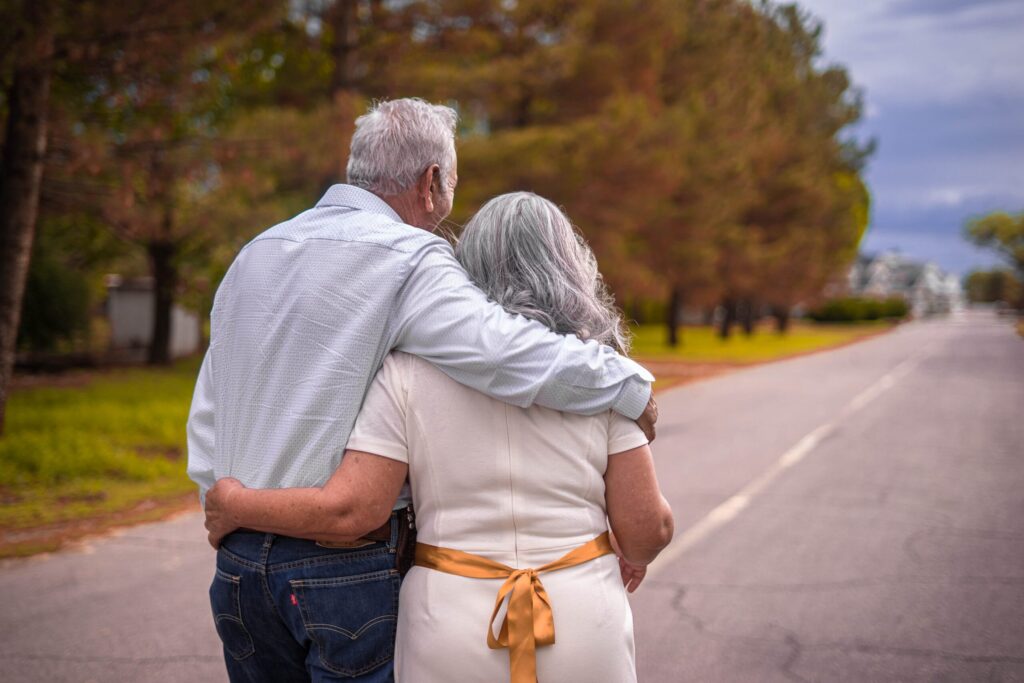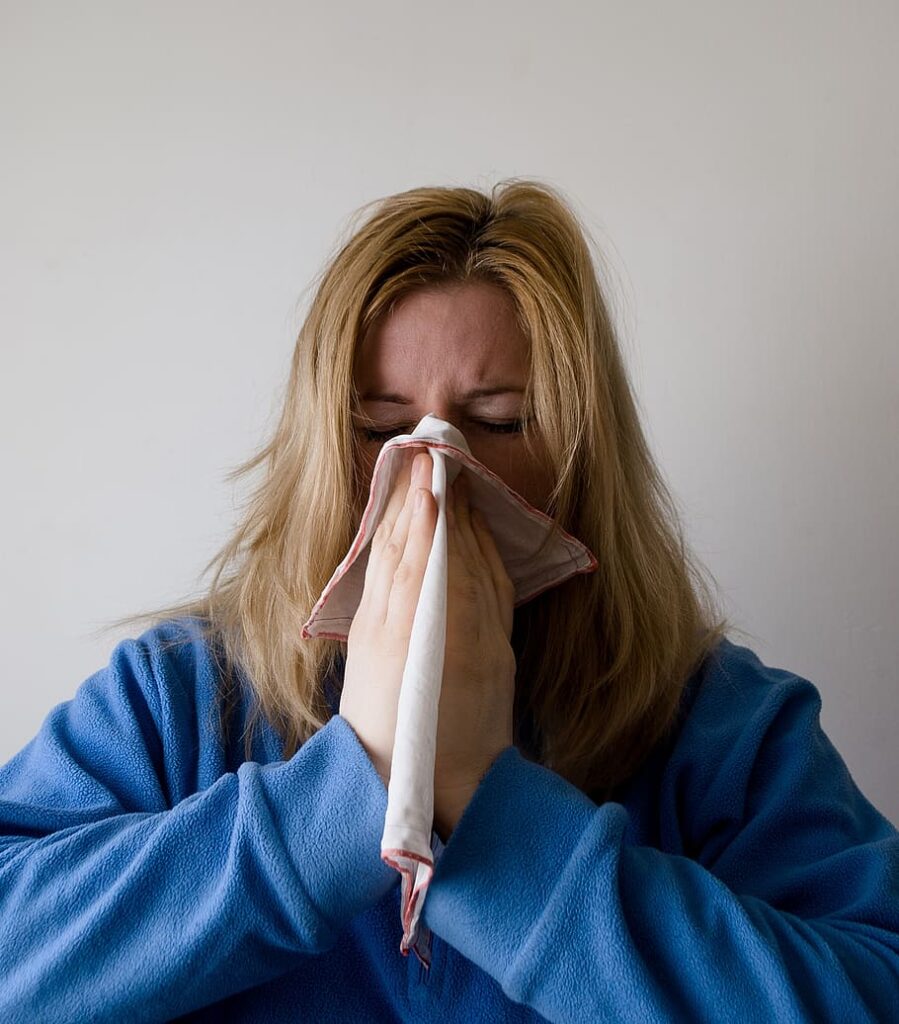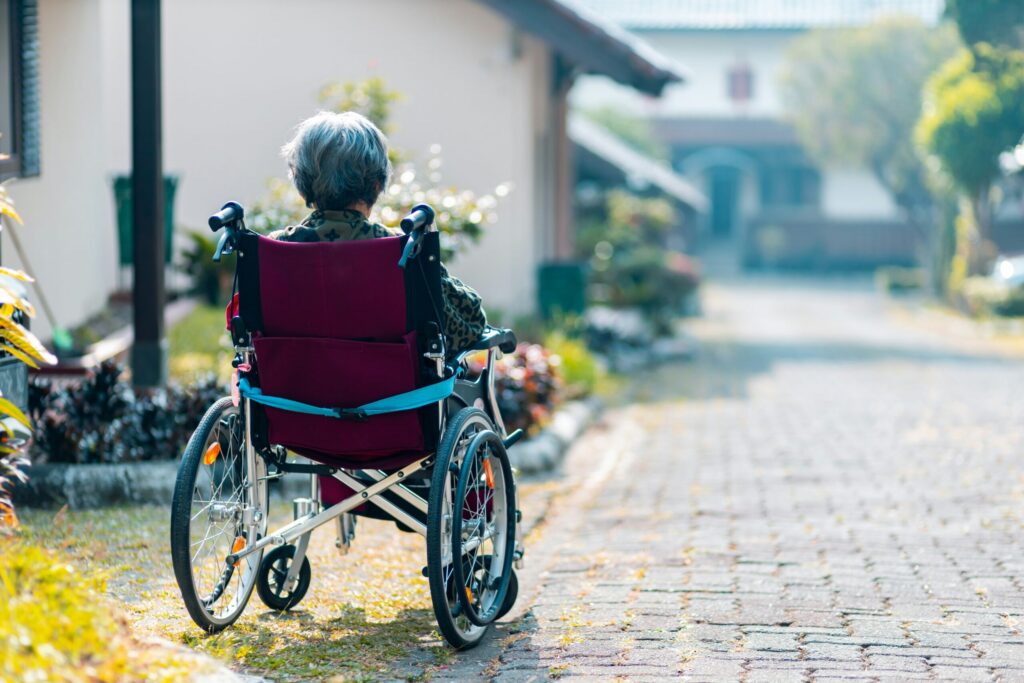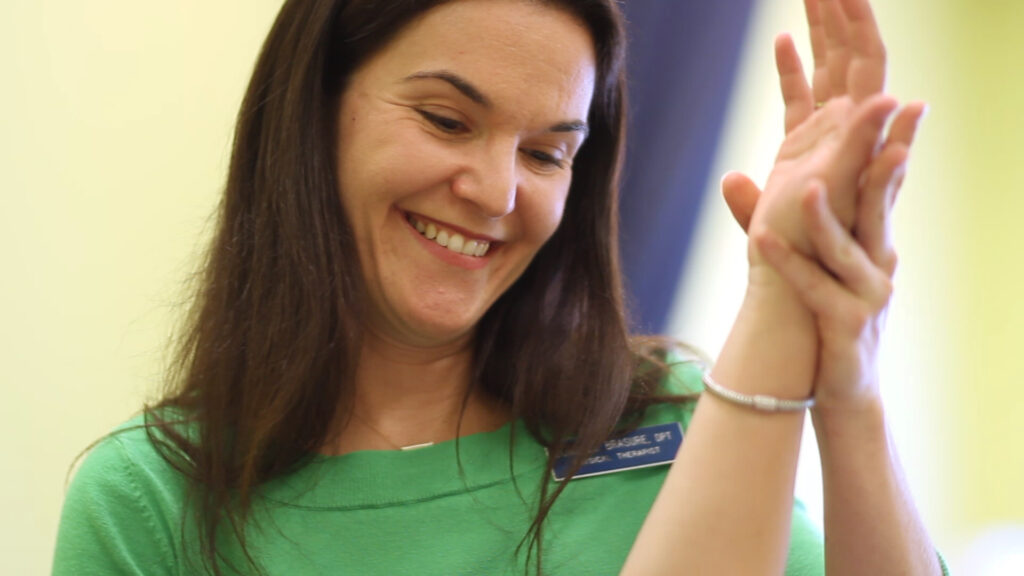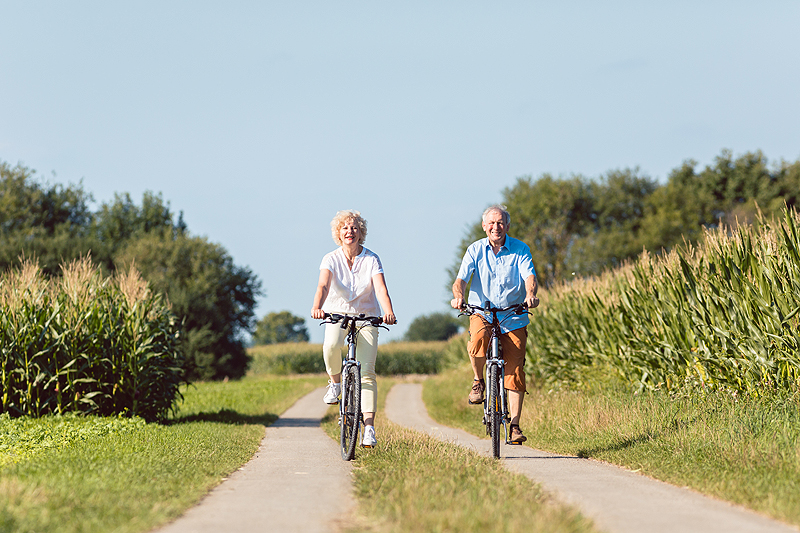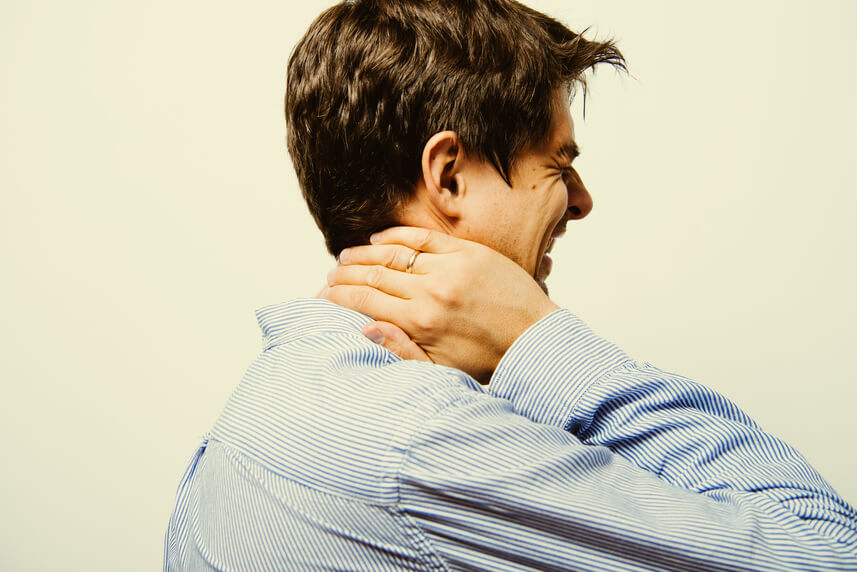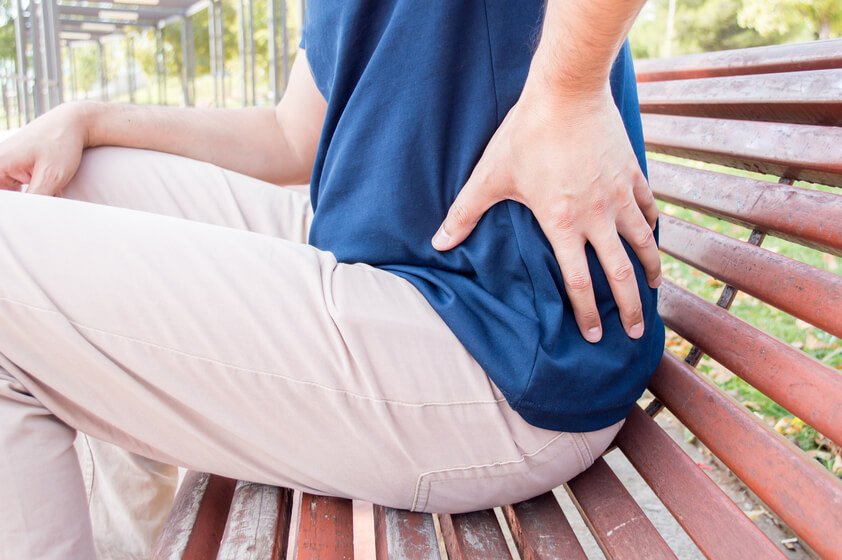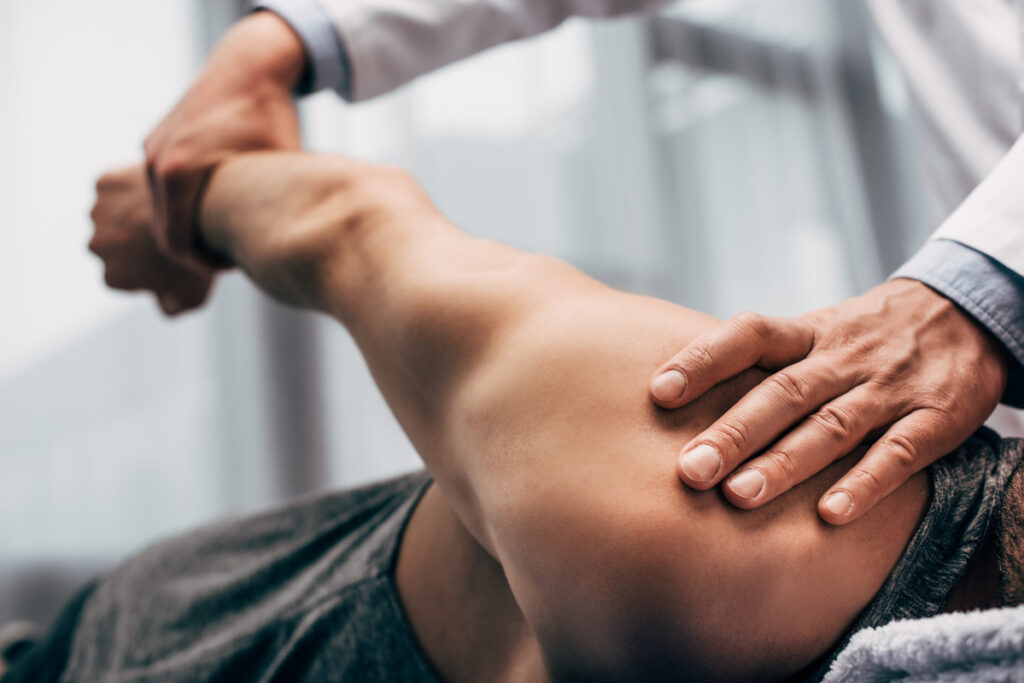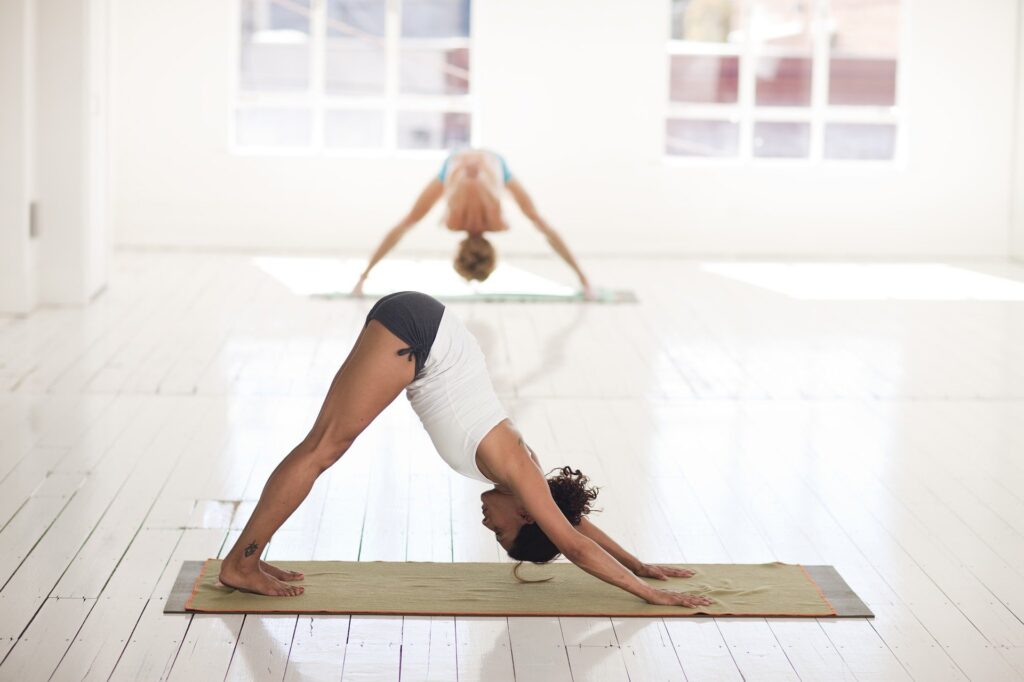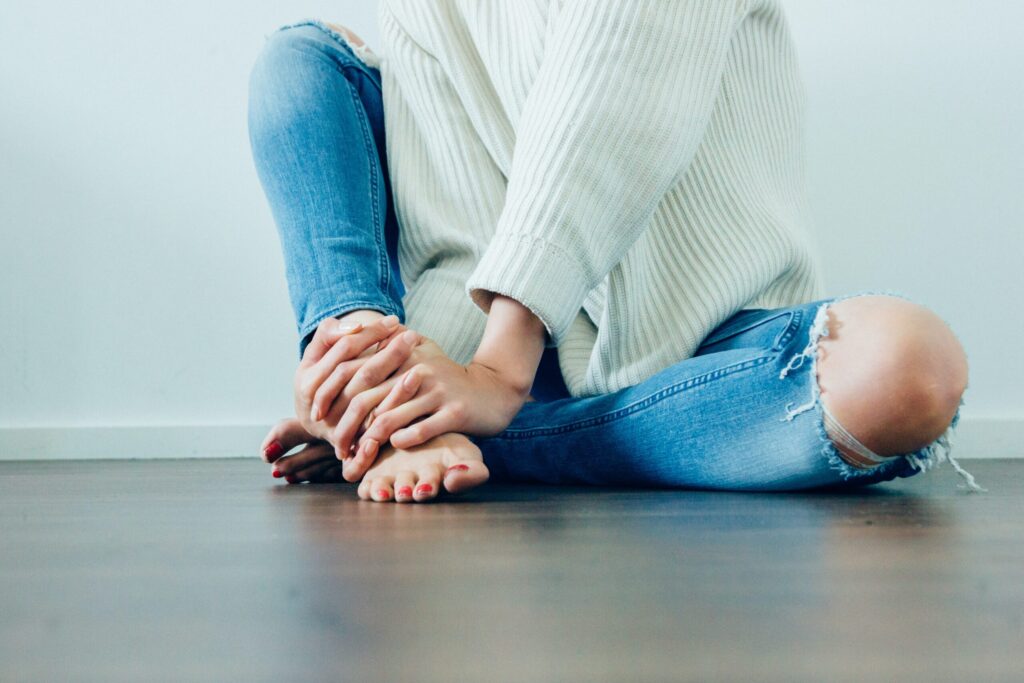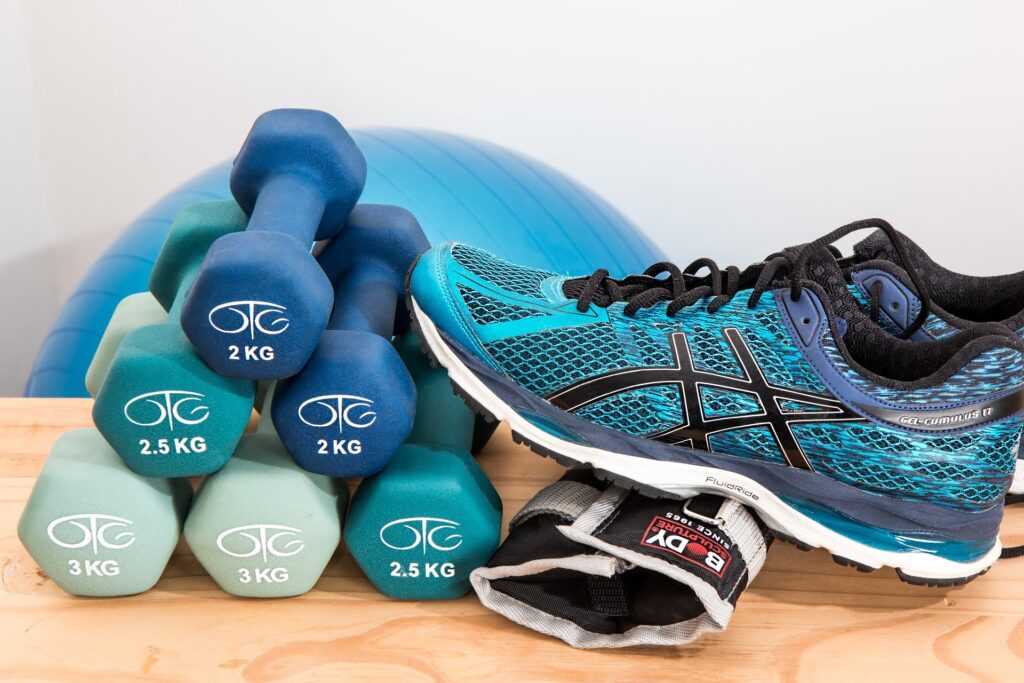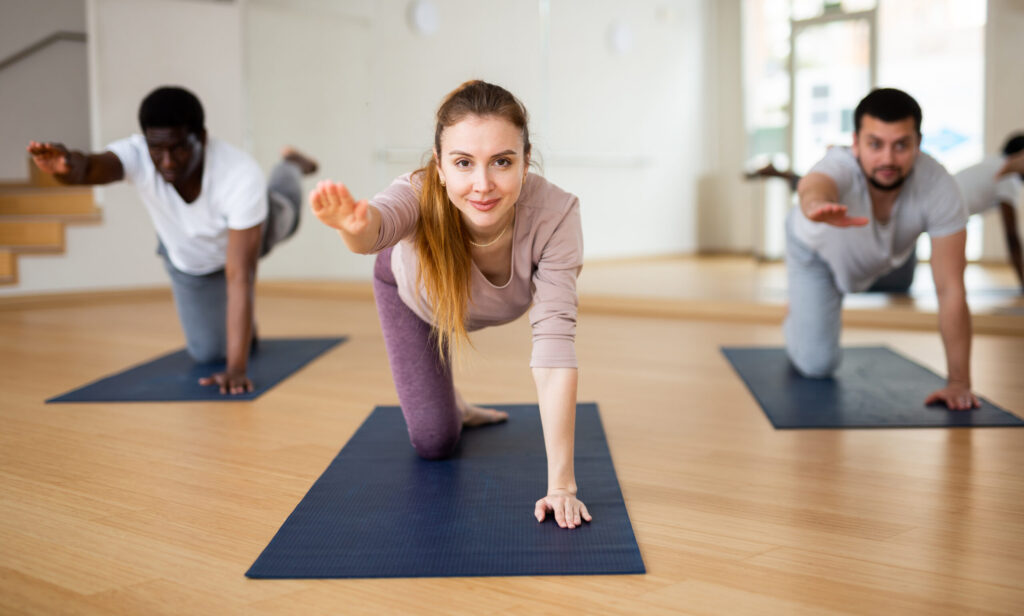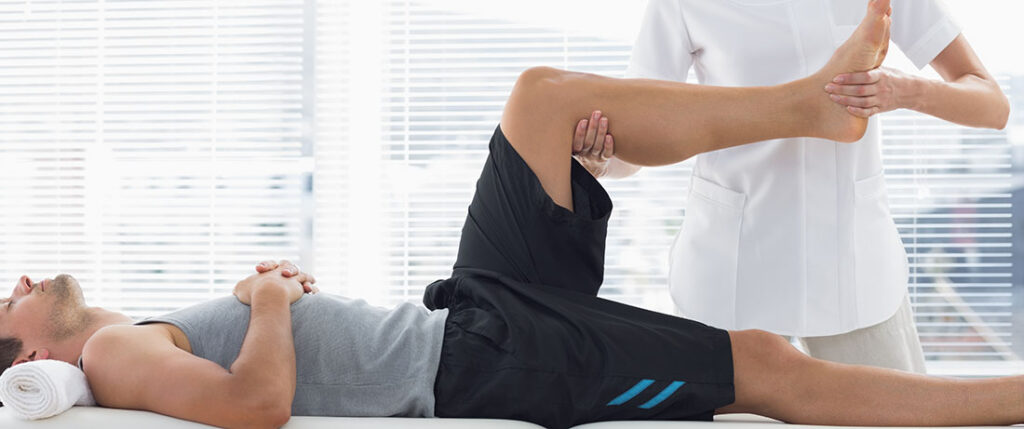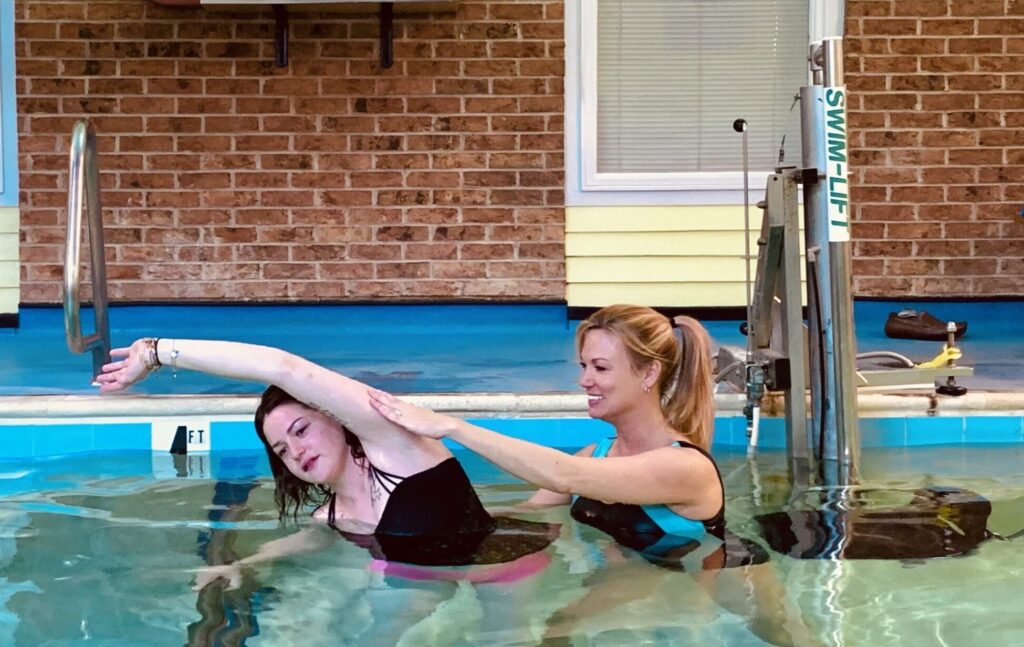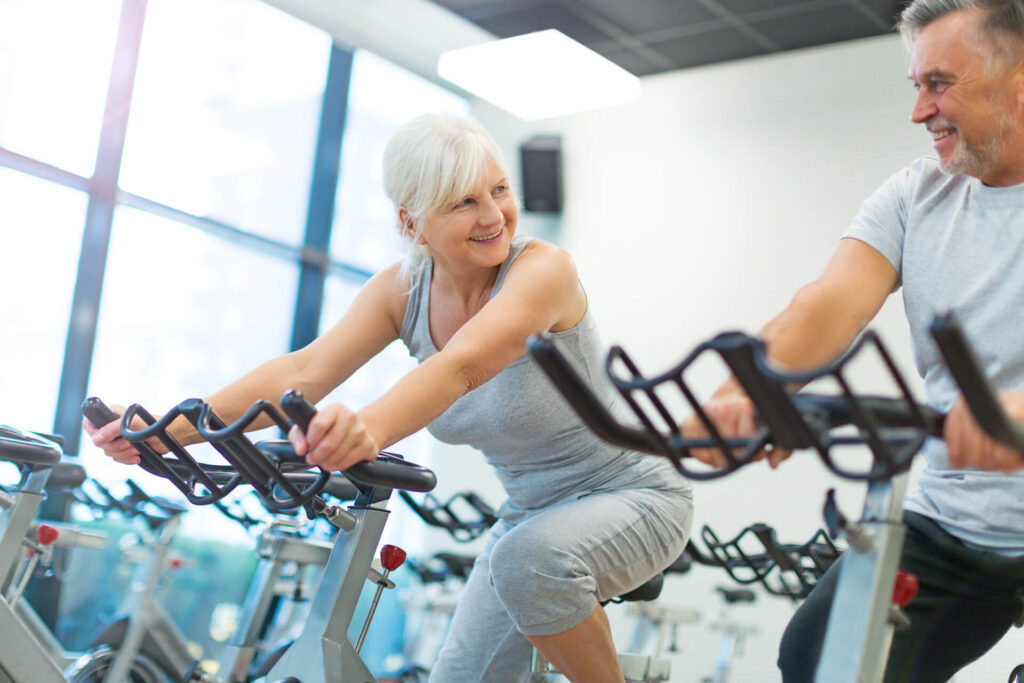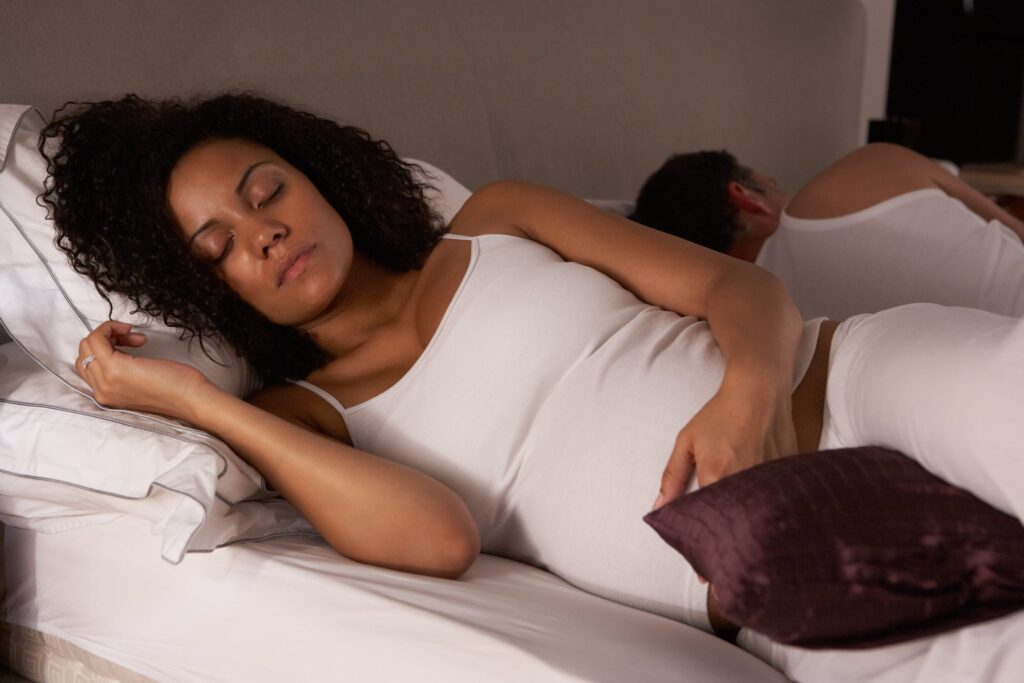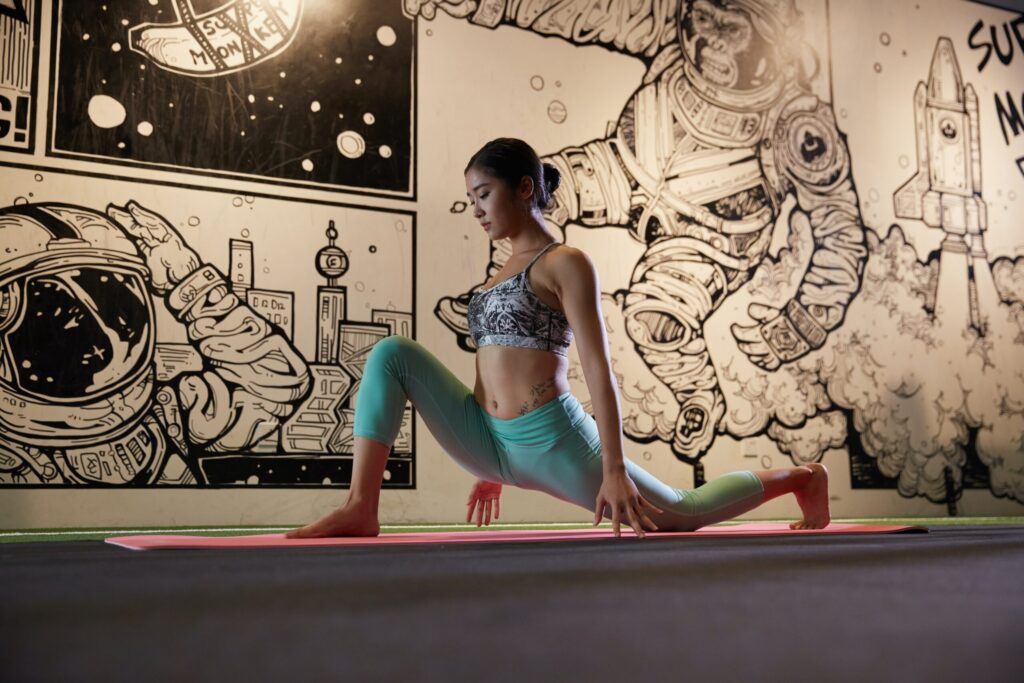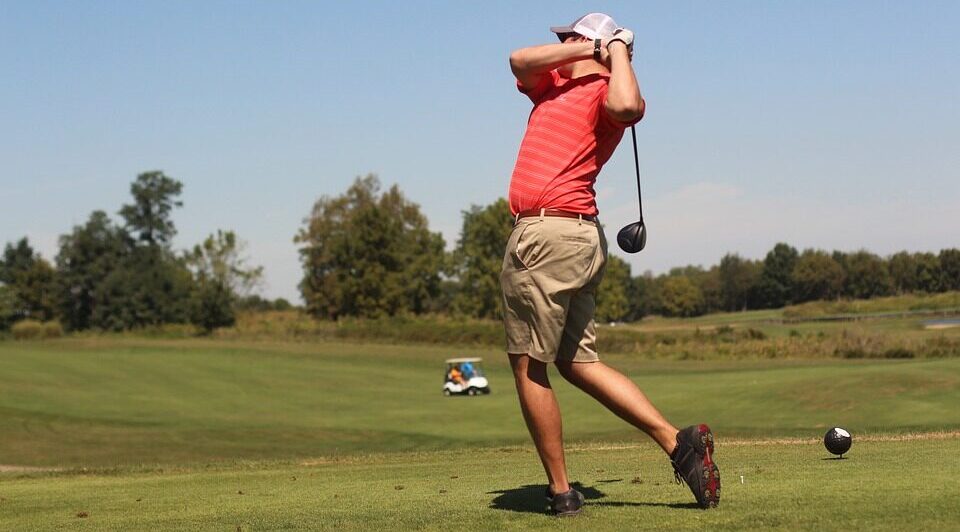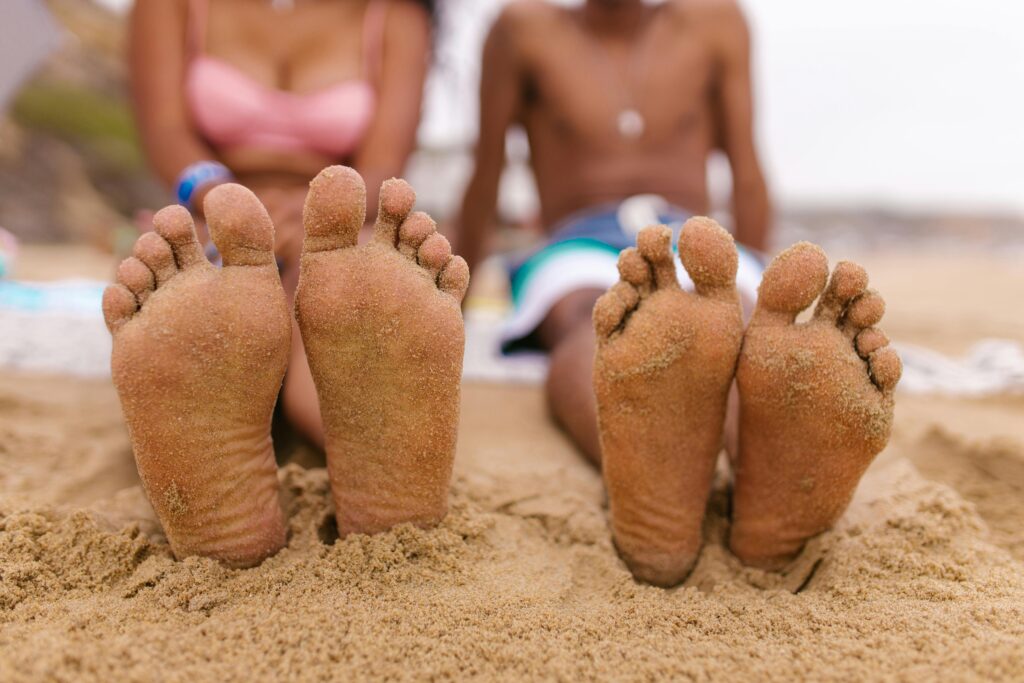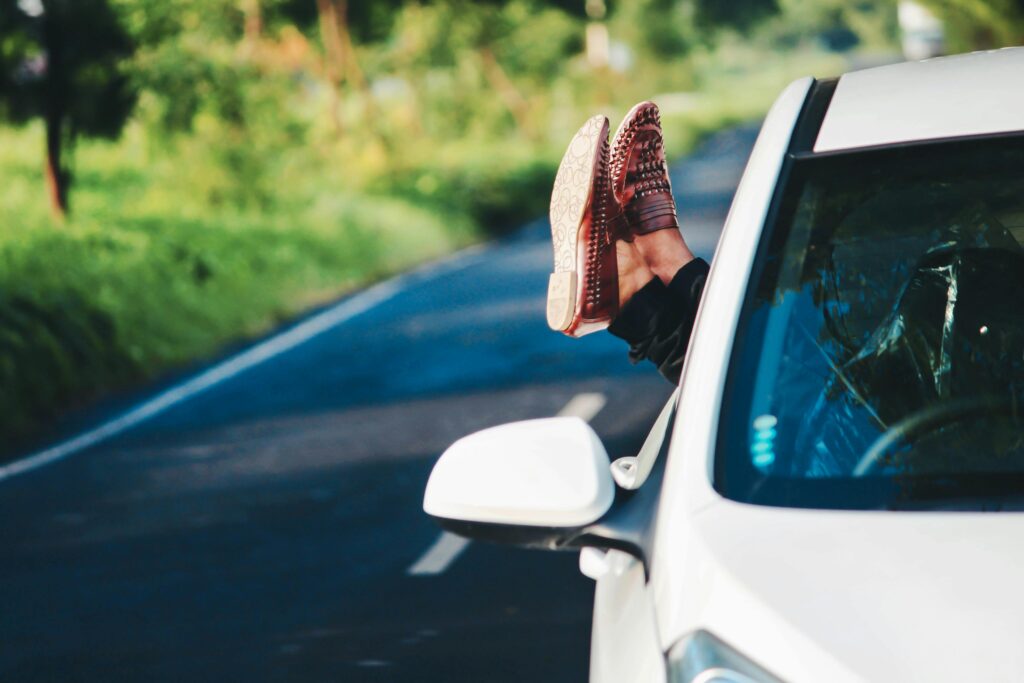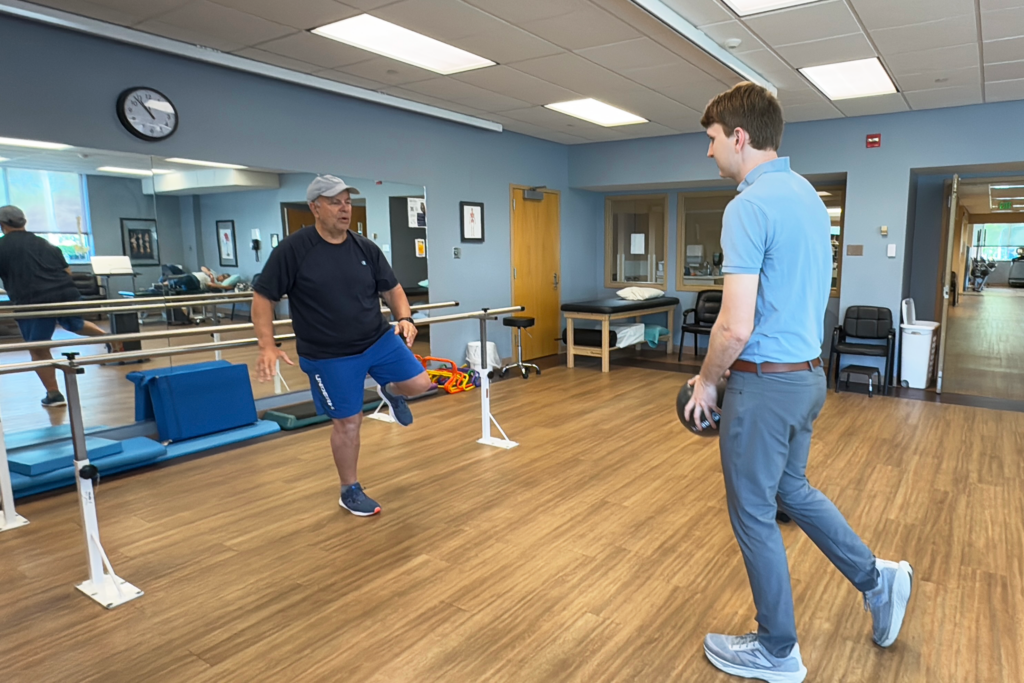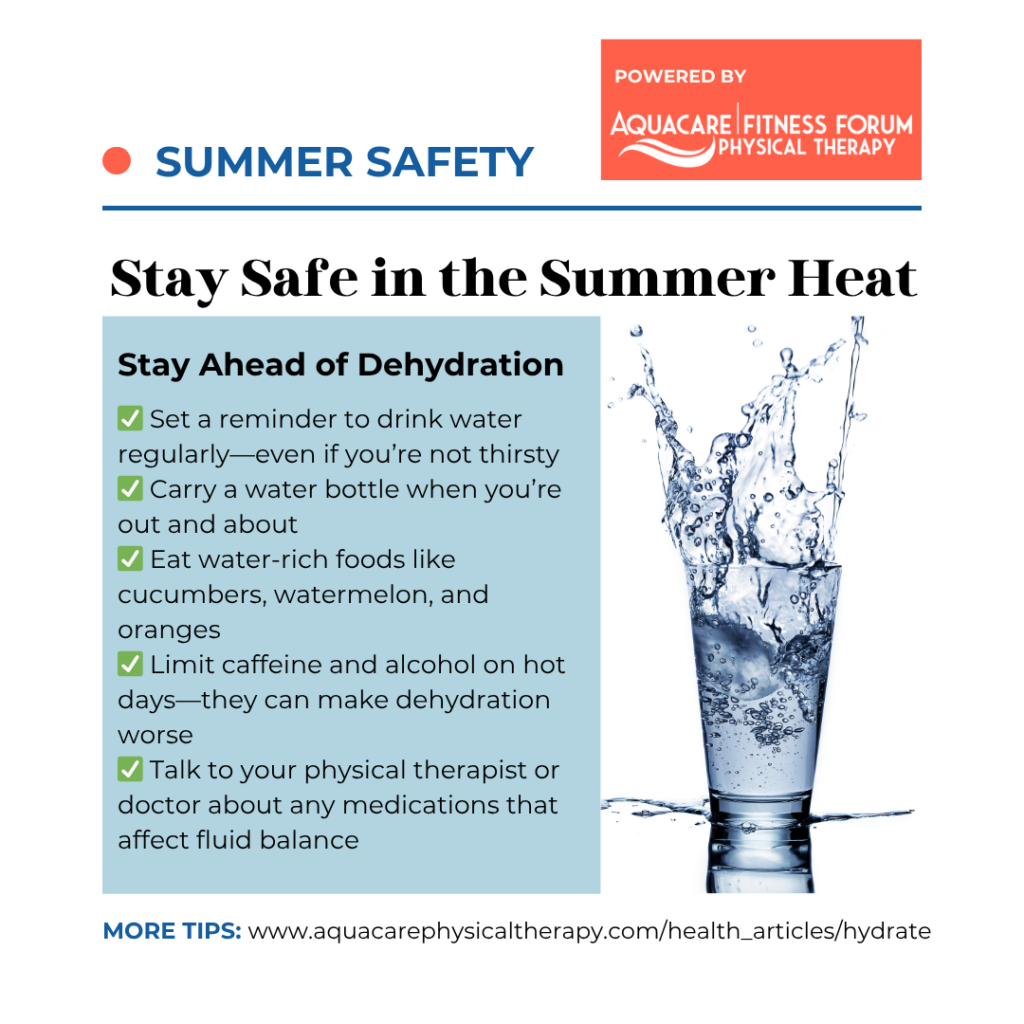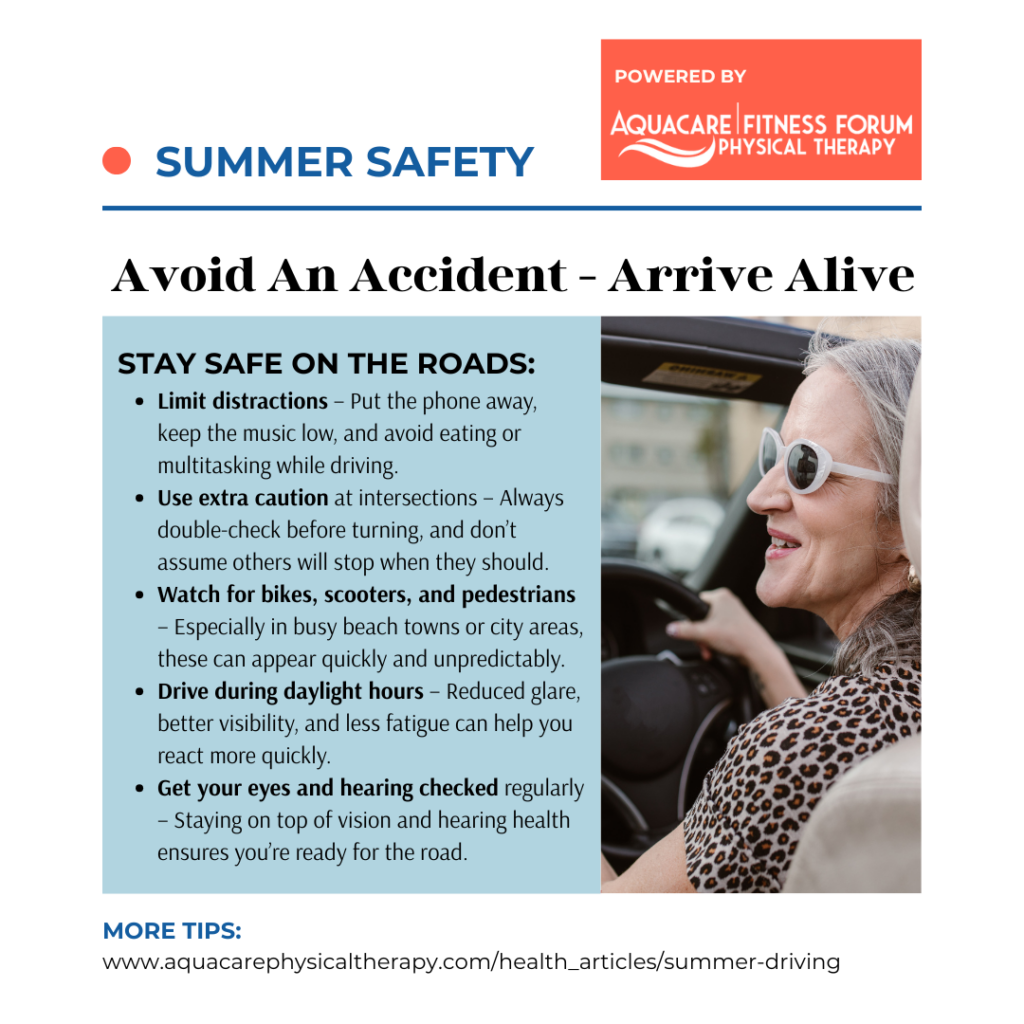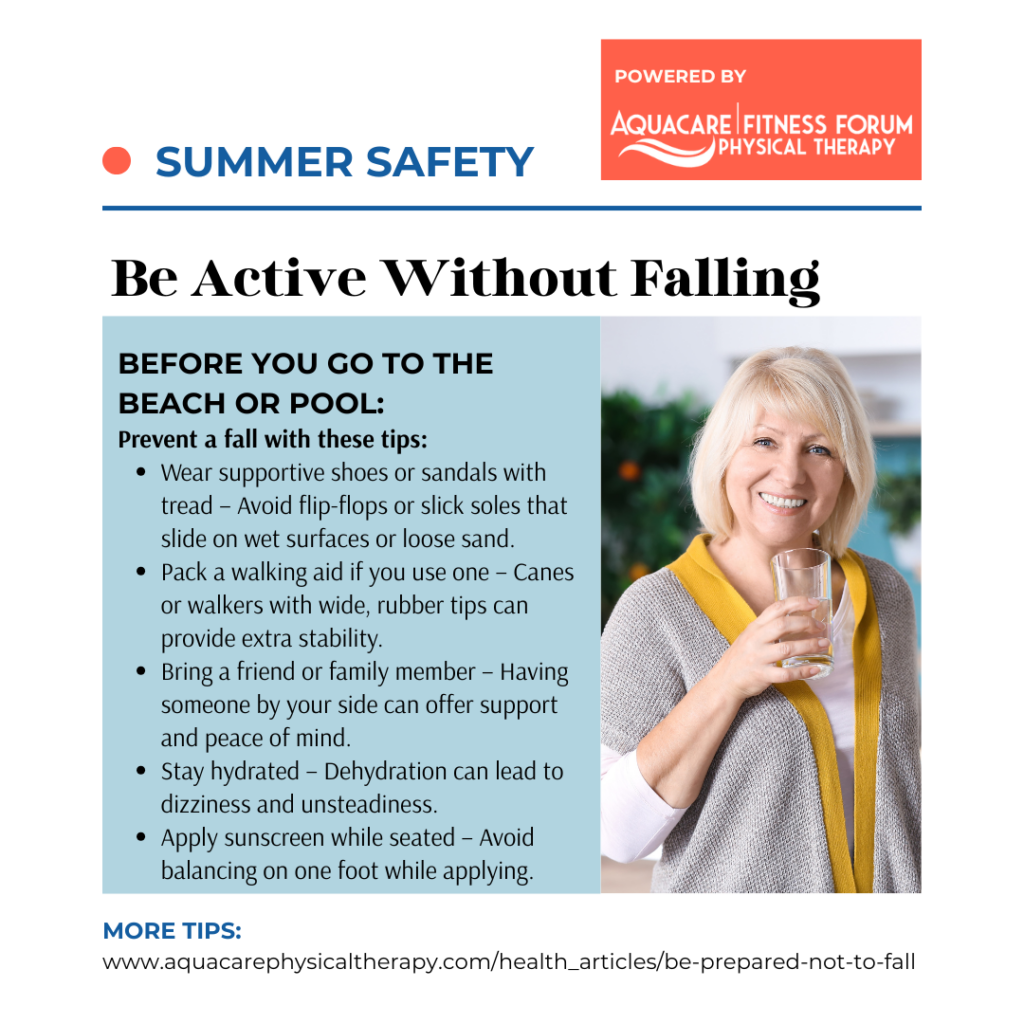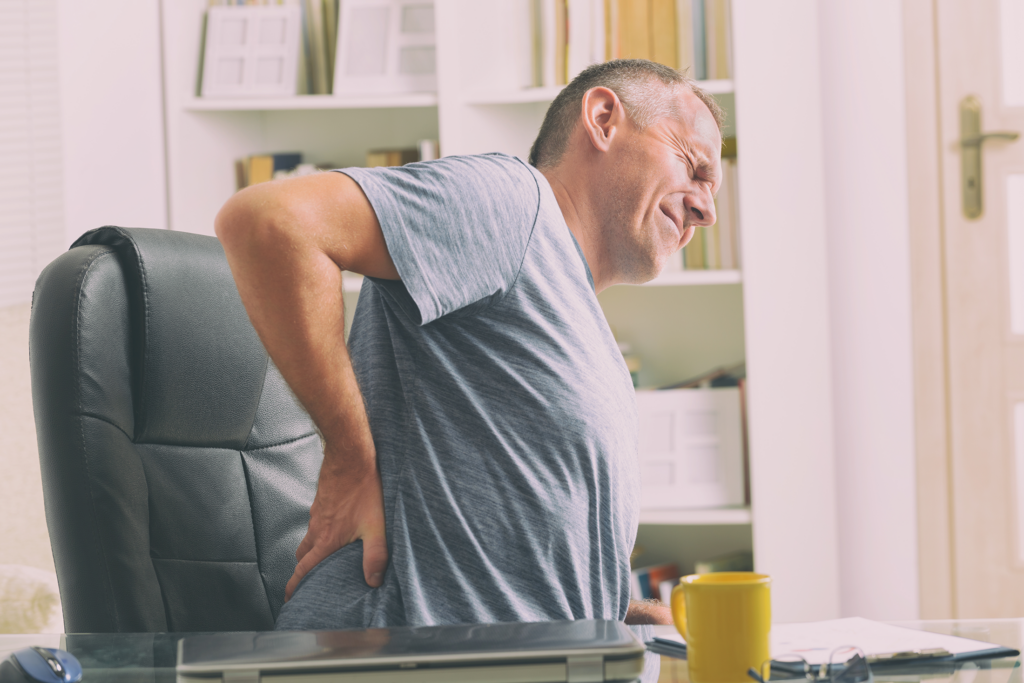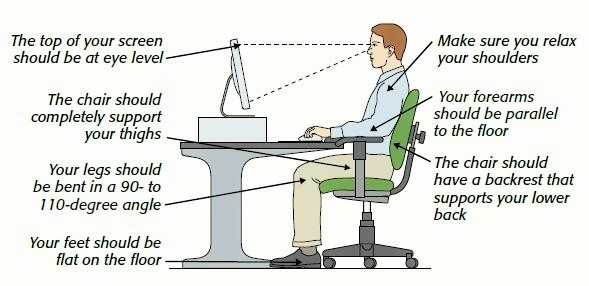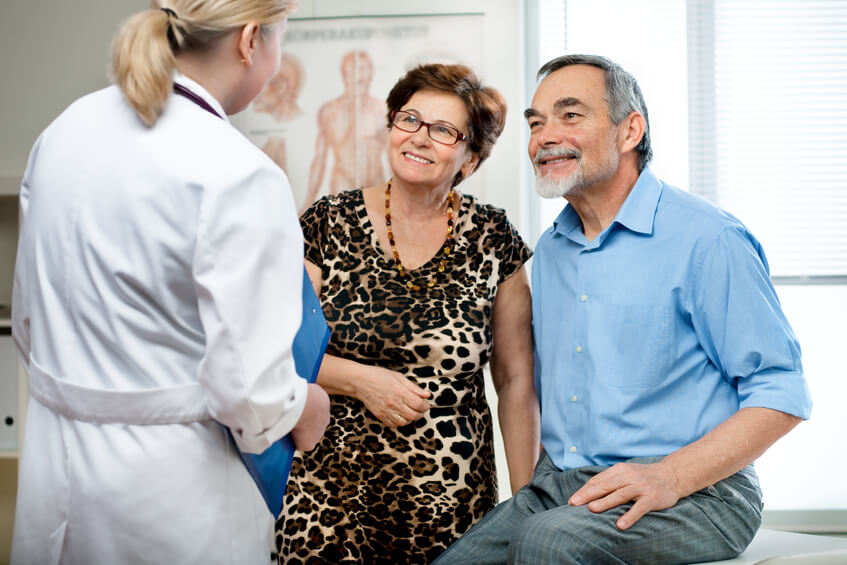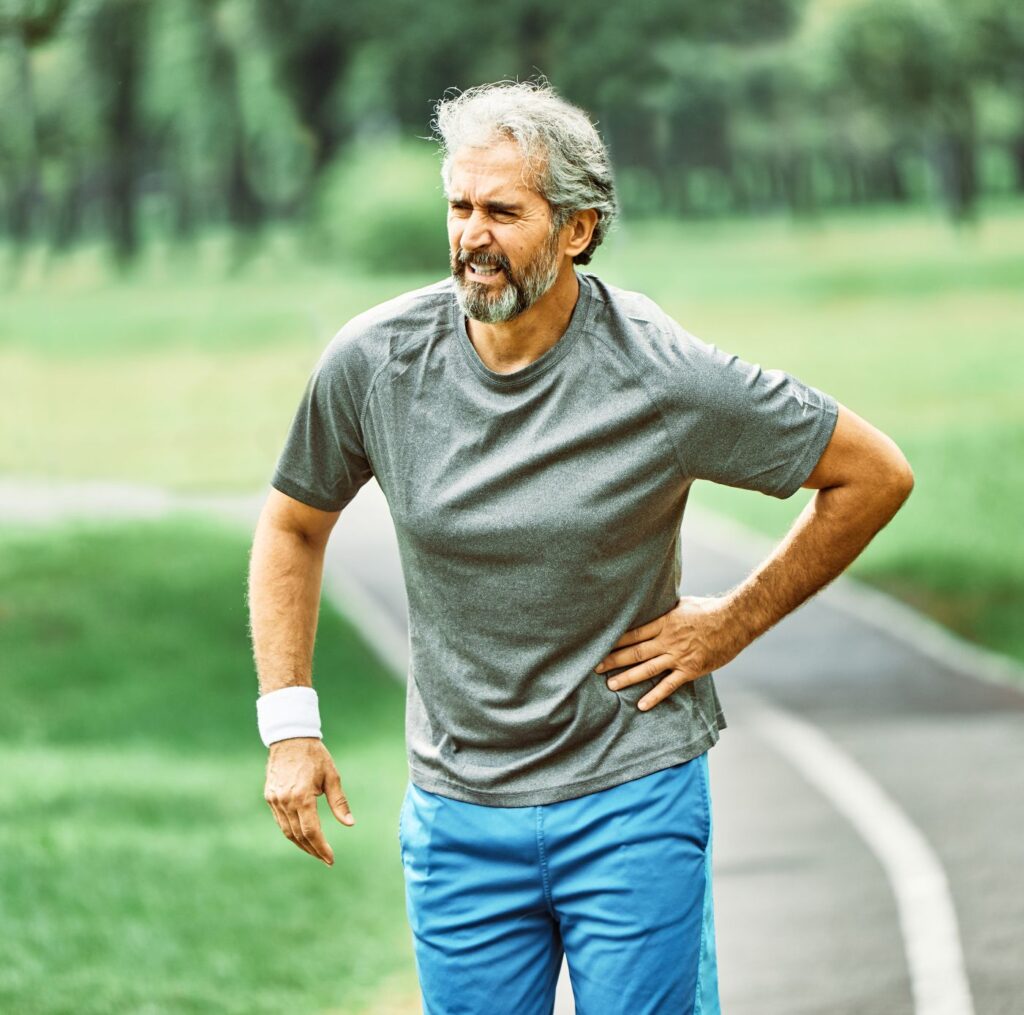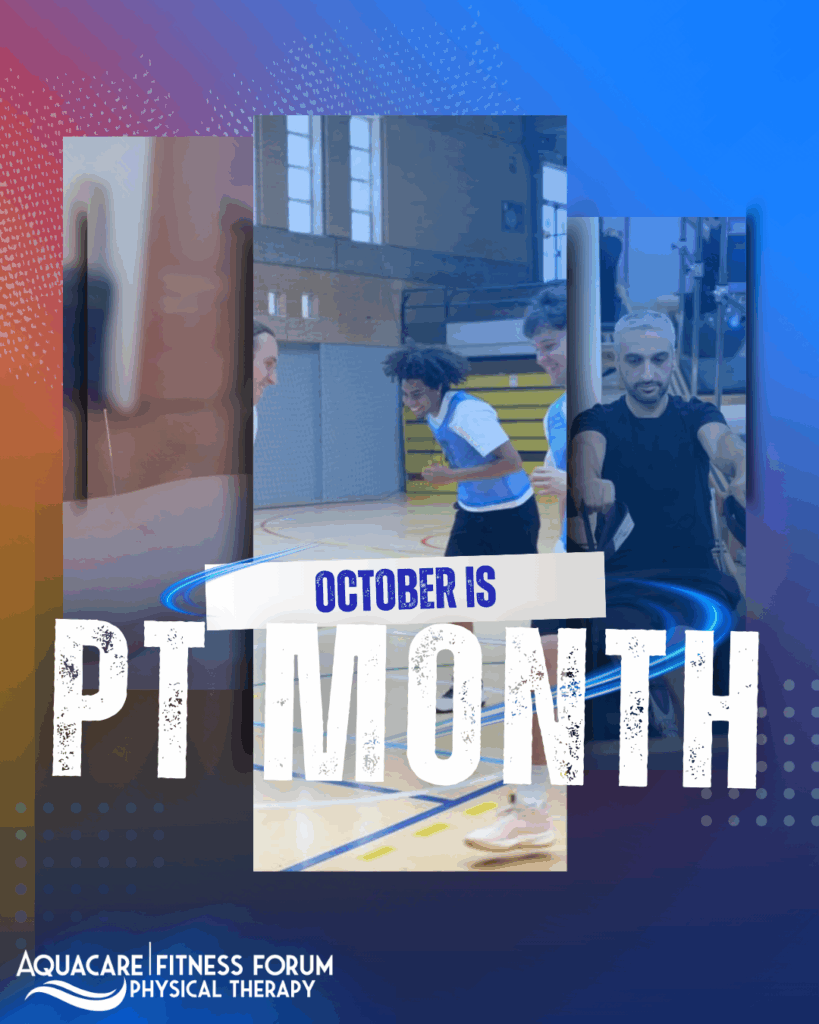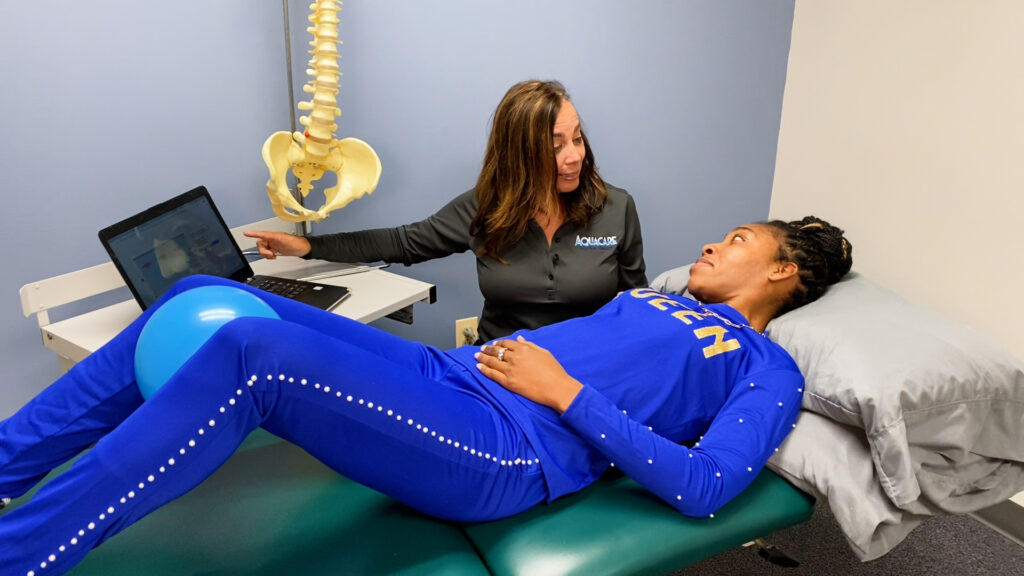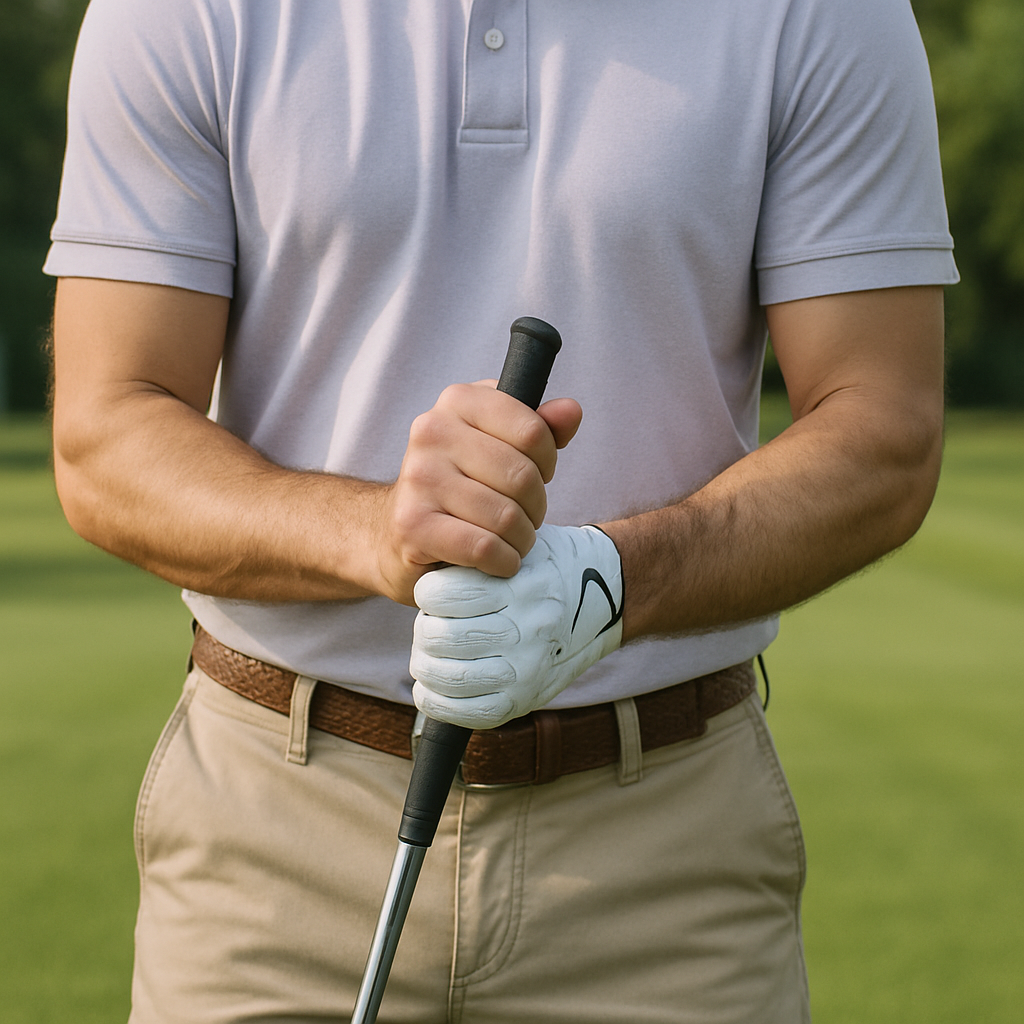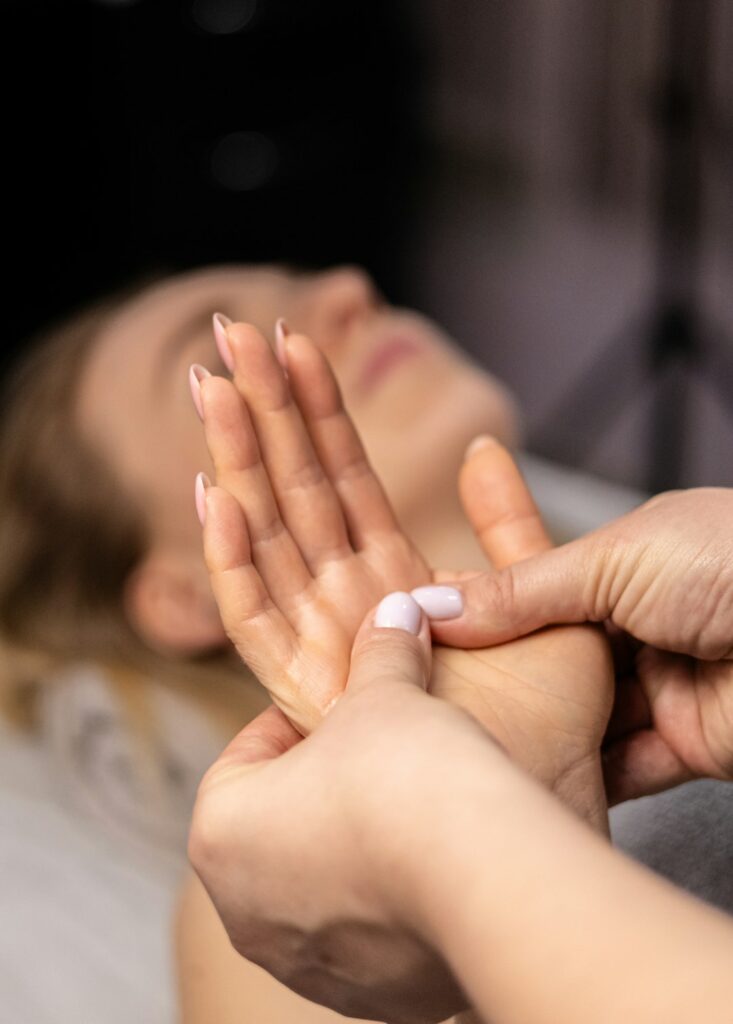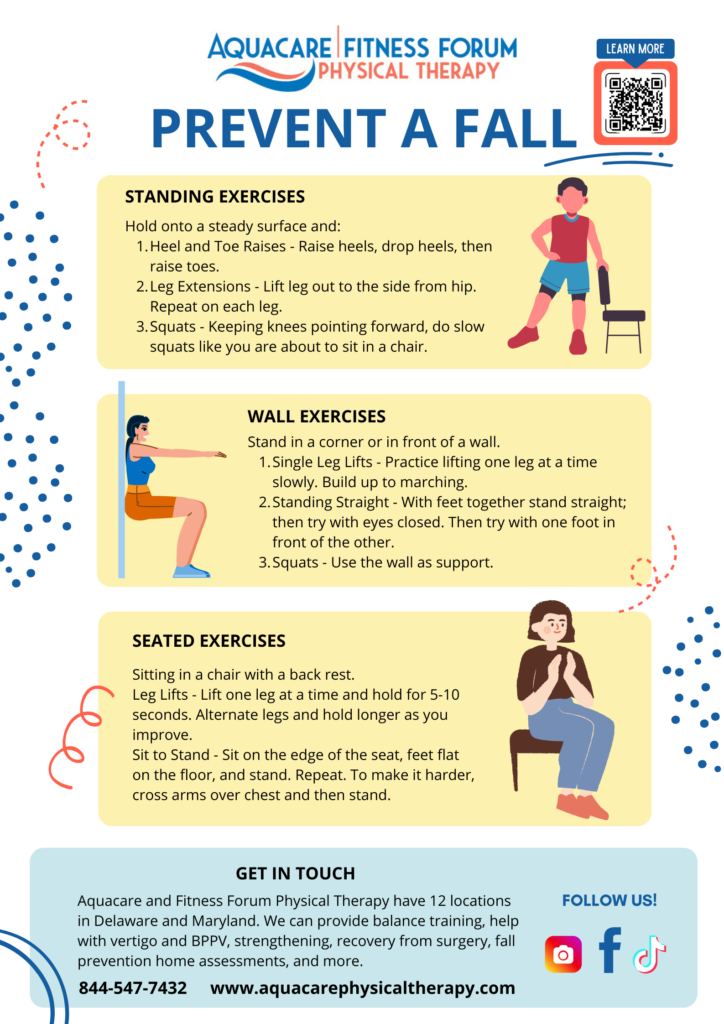
Don’t Trip: Simple Moves to Stay on the Move

Falls don’t have to be a part of aging.
1 in 4 adults over 65 experiences a fall each year—and many of those falls are preventable. Whether you’re walking across the room or stepping off a curb, small changes to your daily habits and environment can make a big difference in staying safe, steady, and independent.
Preventing Falls IsPossible—Physical Therapy Can Help
Many falls are caused by poor balance, decreased strength, or unsafe environments. With the right guidance, you can improve stability, move with confidence, and reduce your risk of falling.
Fall Facts You Should Know
- 1 in 4 adults over 65 falls each year
- Falls are the leading cause of injury-related ER visits among older adults
- Fear of falling can lead to less movement—causing even more weakness and instability
Know Your Fall Risk – Yearly Self-Check
Ask yourself these 4 questions every year:
☐Have you fallen in the past year?
☐Do you feel unsteady when walking?
☐Do you take 4 or more medications?
☐Do you use furniture to steady yourself?
If you answered yes to even one, you may benefit from a physical therapy balance assessment.
Fall Risk Screens (Performed by a PT or medical provider)
Timed Up and Go (TUG):
Walk 10 feet, turn, return, and sit.
12+ seconds = Increased fall risk
30-Second Sit-to-Stand Test:
How many times can you rise from a chair without using your hands?
Fewer than 8–10 reps may indicate leg weakness
4-Stage Balance Test:
Hold four standing positions for 10 seconds each.
Trouble maintaining any = balance concerns
Build Better Balance
Balance naturally declines with age—but it can be improved at any age through consistent practice.
- Balance involves your muscles, vision, coordination, and awareness.
- Safe, guided exercises can retrain your body and boost your confidence.
Fall-Proof Your Home
Most falls happen at home—often in preventable ways.
- Clear the Clutter:Remove throw rugs, wires, and small furniture from walkways.
- Improve Lighting:Add night lights in bedrooms, bathrooms, and hallways.
- Add Support:Install grab bars near toilets and showers; use handrails on all stairs.
Meds, Vision & Footwear: Small Details, Big Impact
Footwear:
- Avoid backless slippers, flip-flops, or shoes with worn soles.
- Choose supportive shoes with a non-slip sole and low heel.
Medications:
- Some medications can cause dizziness or drowsiness.
- Review all prescriptions and supplements annually with your provider or pharmacist.
Vision:
- Poor vision increases fall risk.
- Get annual eye exams and keep prescriptions current.
Stay Mentally & Physically Sharp
Falls aren’t just about strength—they’re also about reaction time, awareness, and focus.
- Mind-body exercises like Tai Chi, dancing, or aquatic therapy help strengthen coordination.
- Puzzles, reading, and brain games also keep your mental reflexes sharp.
Don’t Let the Fear of Falling Keep You Still
It’s natural to be cautious—but limiting your movement can make you weaker and more prone to falls.
- Stay active with structured, safe programs.
- A PT can tailor a plan just for you—boosting strength, mobility, and confidence.
Our Fall Prevention Guide here.
Learn to Fall (and Get Up) Safely
If a fall does happen, knowing how to respond can reduce injury and help you recover quickly.
- Tuck your chin to protect your head.
- Try to roll instead of landing stiffly.
- Physical therapists can teach safe falling and recovery techniques.
Small Steps Toward a Safer Tomorrow
By taking action now—whether it’s adjusting your home, improving your balance, or simply wearing better shoes—you’re investing in your independence and well-being.
Want Help Preventing Falls?
Fitness Forum Physical Therapy
We offer free fall-risk screeningsand personalized recommendations to help you stay safely on your feet.

